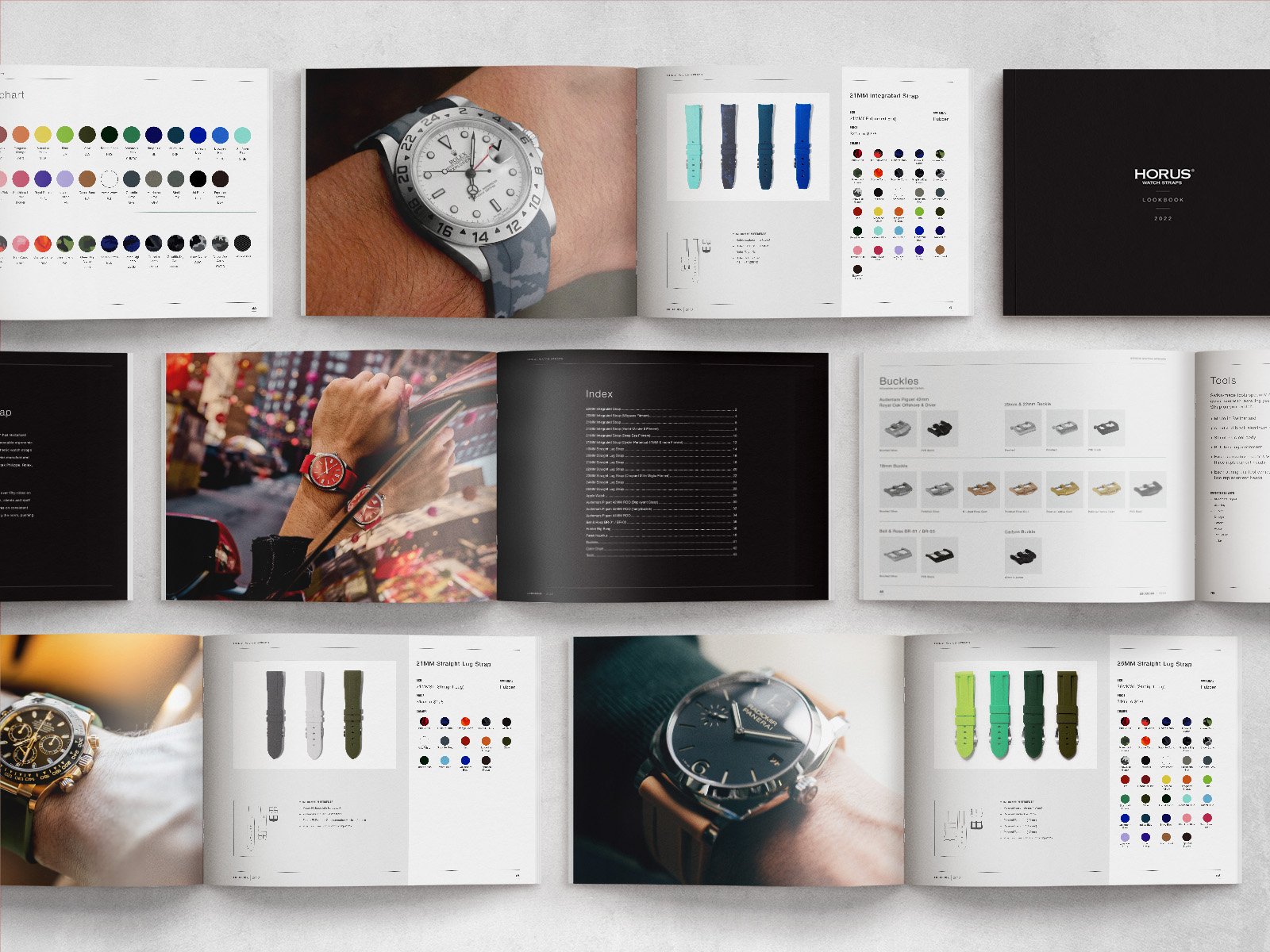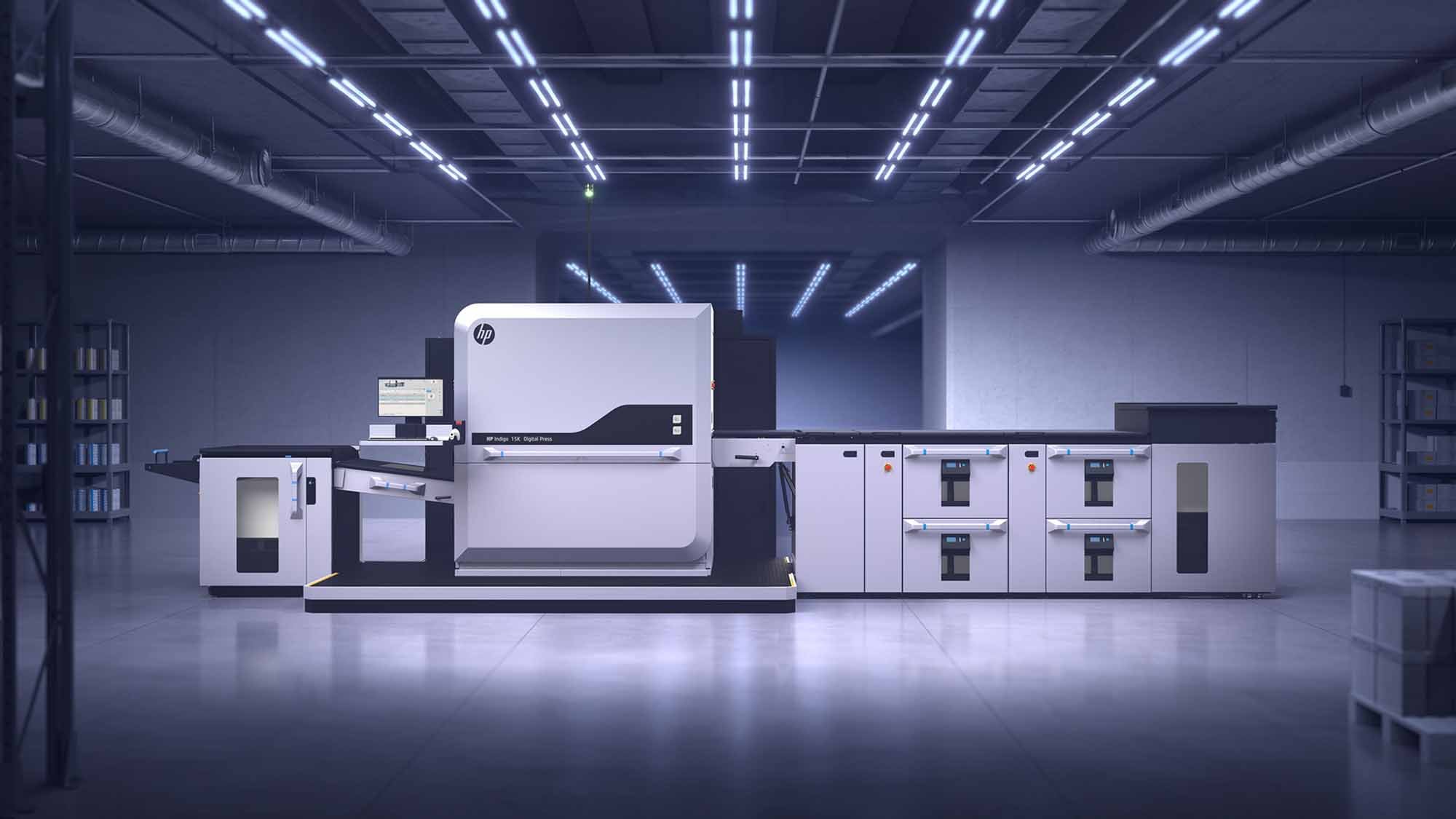How to Choose Your Next Lookbook Design Agency
Learn the design process, gain insights on messaging strategy, and discover the best practices that will help you pick the perfect partner
Above: A lookbook we recently completed for Horus Watch Straps.
Table of contents
Choosing the right agency to design your next lookbook
What is a lookbook?
The lookbook design process
Discovery – the Foundation
Strategy – the North Star
Design – the Fun Part
Production – the Main Event
Interested in starting a lookbook design project?
Choosing the right agency to design your next lookbook
Partnering with the right design Agency for your next lookbook is a critical decision that can make or break your next sales year and beyond. Not to be overly dramatic, we’ve just seen bad lookbooks happen to good brands! It’s more common than you think. The good news is you can avoid heading down that path by asking yourself some straightforward questions up front.
Does the agency have direct experience in my business? Can they provide samples?Do they specialize in lookbooks or similar projects like editorial design or general book design? Are they able to handle the process from start to finish?Do they have good relationships with printing or production vendors?
With that in mind, let’s get into the ins and outs of what a lookbook is and how to go about making one that will achieve your goals.
What is a lookbook?
Think of your latest lookbook as a mobile show room. It’s a high-end digital or printed representation that showcases everything your company has to offer. A professionally crafted lookbook is an opportunity to boost your brand or generate a buzz around your latest product line or service offerings. A great lookbook typically includes professional photographs, polished copywriting, and compelling design.
The lookbook design process – let’s break it down.
Thoughtful planning will ensure you deliver a book that captures your brand values, while setting the stage for a seamless partnership with your agency of choice. We like to categorize a lookbook design project into four key milestones:
Discovery
Strategy
Design
Production
Equally important, each phase should happen with close collaboration between agency and client to get the most out of every page. The goal is to ensure that your messaging and values come across organically while always being engaging and to the point.
Above: A lookbook we recently completed for Weldwork.
Discovery – the foundation
At any agency, the lookbook discovery phase is perhaps the most important part of the entire project. It’s absolutely crucial to understanding the goals, scope, objectives, and vision. Below are a few questions we like to ask at the beginning of a lookbook design project:
What is the main goal of the lookbook? To sell more products? To promote a new service? The goal doesn’t always have to be tangible. Sometimes the best lookbooks simply create brand awareness.
Who is the audience and how do we describe them? Defining the target audience will help your content strategy (picking images, crafting language, production techniques, etc.)
What are the touch points of the lookbook? Will it be digital, physical, or both?
Design tip: The answer to this question will help us determine the size and layout.
How will the lookbook be shared? On a website, via email, at trade shows?
If the lookbook is going to be printed, what are the production requirements? Should we accommodate for specialty Pantone inks or unique printing options?
Who are the client’s major competitors (direct and indirect)?
Design tip: Asking the client for aspirational brand lookbooks can help us understand the aesthetic direction.
Strategy – the North Star
After establishing the answers to those questions, we take a deep dive into the strategy phase of the project. This typically begins with developing a copy deck which includes the tone and voice direction that will be implemented throughout the lookbook.
Is the tone in the first person, is the language more technical, or is the voice humorous? The writing style is just as important as the design and it will ultimately help you connect with your audience in a meaningful way.
Above: The wireframe we created for the watch strap lookbook design.
The next step is to begin wire-framing the book. This is the creation of very quick iterations of the content on every page. The content is categorized by copy, images, and graphics. In some cases, the content is represented by shapes and blocks instead of the actual content. This helps us (and the client) better understand the narrative without focusing on details like color, specific images, or illustrations.
Design – the fun part
Once the client has approved the outline, structure, and narrative of the lookbook, it’s time to dive into the design. At this point, we try to create templates for pages that share similar content. This can be product pages or general content pages. We always like to achieve a balance between consistent and dynamic layouts to keep the reader engaged.
Another design item we streamline and standardize is typography. This is similar to a website design project where we establish font styles for headlines, sub-headlines, body copy, captions, and any other font requirements. We can set these up as paragraph or character styles and adjust them across the entire document with just a few clicks (if necessary).
Production – the main event
In a digital world, it’s always exciting to design something that will end up being tangible. If you have a passion for books, you most likely share our sentiment for that new book smell.
Since we've already established the format and size in the discovery phase, the production should be relatively easy. There are many factors which can influence production strategy, including a few of the items listed below:
How many lookbooks are going to be printed?
What is the client’s production budget? Do they want to spend $5 per book, $40 per book, or more?
The budget and quantity will have the greatest effect on the type of printing press. The most common are digital and offset presses.
Depending on the printer, quantities over 500 will allow for offset printing (more on the difference between offset and digital printing below).We prefer offset printing, as that typically allows for more unique production techniques like Pantone inks, foils, and embossing. The quality is generally better with offset printing and the costs per unit are also typically lower (depending on the specs).
Above: The HP Indigo Digital Printing Press. One of the best digital machines!
Digital printing has its own advantages and some will argue that the quality is just as good as offset printing. Digital printing technology has come a long way and some of the big new digital printing presses are forces to be recognized.
This type of press will be most cost efficient at lower quantities.In conclusion, there are many variables that will affect your final decision. It’s important to understand the customer’s objectives upfront and to partner with a reliable printing vendor.
Interested in starting a lookbook design project?
Omit Studios has the experience and resources to strategize, design, and produce a timeless lookbook that will convert interested readers into valued customers. If you’d like to schedule a call to kick off your next lookbook, or just hear more about the services we provide at Omit Studios, please contact us.



